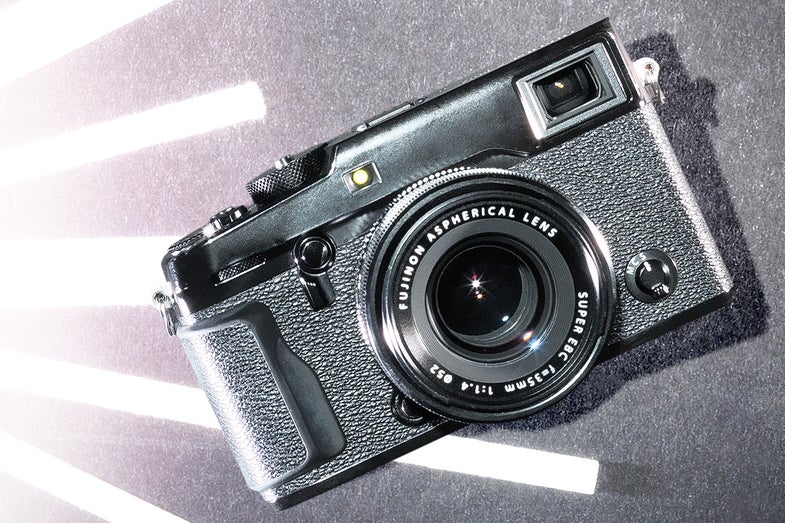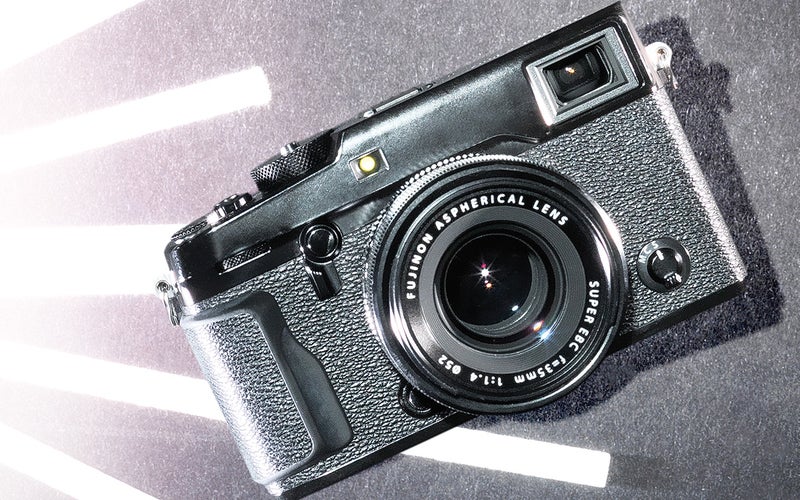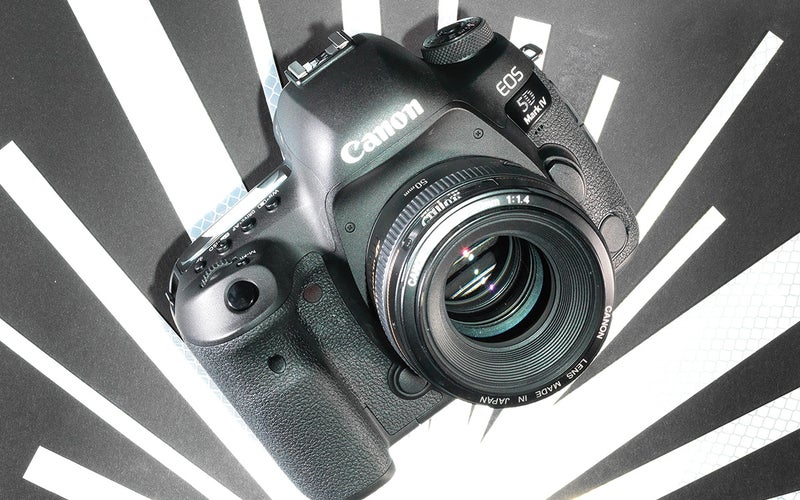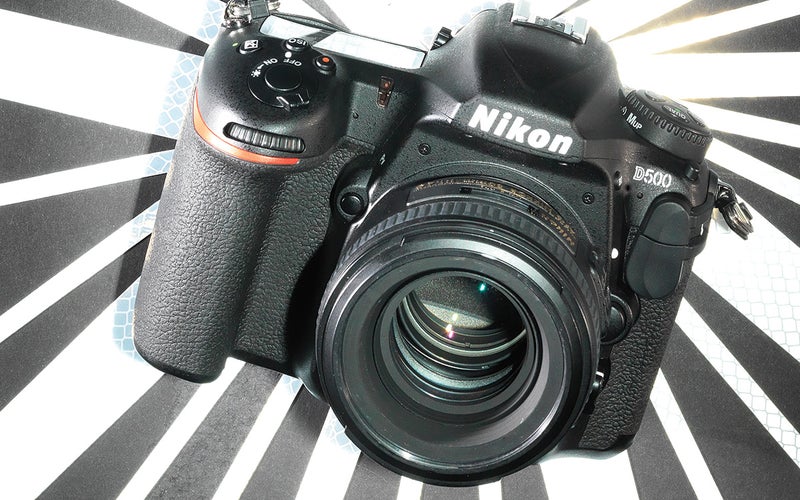2016 Camera of the Year: Fujifilm X-Pro2
In a year of bravura performances, the Fujifilm X-Pro2 claimed the spotlight early and earned a standing ovation

We may earn revenue from the products available on this page and participate in affiliate programs. Learn more ›
Brian Klutch
A single criterion guides Pop Photo’s choice of Camera of the Year: It must be the model that best refined or redefined photography in the past 12 months. In a year that brought a host of wonderful cameras to pros and enthusiasts alike, applying this criterion kept us focused on the bigger picture.
Sure, we saw incremental gains in resolution, low-light performance, and speed in many new cameras—and that’s great. But ultimately we chose the model that rekindled our own excitement about taking pictures, the one that redefined the whole experience of photographing: Fujifilm’s X-Pro2.
Of course, the X-Pro2, with its 24.3MP APS-C-format X-Trans CMOS III sensor, delivered terrific results in the Popular Photography Test Lab. Resolution at ISO 100 was the highest we’ve seen from an APS-C-sized sensor, and the camera held noise to moderately low up to ISO 800. Factoring in its highly accurate color rendition, we rated overall image quality Excellent up to ISO 400. Capture is pretty fast, too, with a burst speed of 8 frames per second for up to 83 JPEGs, 33 losslessly compressed Raw files, or 27 uncompressed Raw images.
But what truly boosted the X-Pro2 onto the winner’s podium was its brilliant body design. Its most obvious features are the well-placed dials for shutter speed, ISO, and exposure compensation. Combined with the marked aperture control rings on many of Fujifilm’s X-system lenses, they give you full control of all exposure settings before you even turn the camera on—a boon to street shooters, photojournalists, and any photographer who likes to pre-set exposure to react swiftly to the scene.
A single criterion guides Pop Photo’s choice of Camera of the Year: It must be the model that best refined or redefined photography in the past 12 months. In a year that brought a host of wonderful cameras to pros and enthusiasts alike, applying this criterion kept us focused on the bigger picture.
Sure, we saw incremental gains in resolution, low-light performance, and speed in many new cameras—and that’s great. But ultimately we chose the model that rekindled our own excitement about taking pictures, the one that redefined the whole experience of photographing: Fujifilm’s X-Pro2.
Of course, the X-Pro2, with its 24.3MP APS-C-format X-Trans CMOS III sensor, delivered terrific results in the Popular Photography Test Lab. Resolution at ISO 100 was the highest we’ve seen from an APS-C-sized sensor, and the camera held noise to moderately low up to ISO 800. Factoring in its highly accurate color rendition, we rated overall image quality Excellent up to ISO 400. Capture is pretty fast, too, with a burst speed of 8 frames per second for up to 83 JPEGs, 33 losslessly compressed Raw files, or 27 uncompressed Raw images.
But what truly boosted the X-Pro2 onto the winner’s podium was its brilliant body design. Its most obvious features are the well-placed dials for shutter speed, ISO, and exposure compensation. Combined with the marked aperture control rings on many of Fujifilm’s X-system lenses, they give you full control of all exposure settings before you even turn the camera on—a boon to street shooters, photojournalists, and any photographer who likes to pre-set exposure to react swiftly to the scene.
More important, though, is the finder. Not content to create a rangefinder-style mirrorless interchangeable-lens compact (ILC) camera, Fujifilm created a unique hybrid finder that blends a bright-line optical finder with a high-resolution electronic viewfinder. You can switch between viewing styles or combine them. The optical finder lets you see elements of the scene just outside your frame and recompose or wait for the optimum moment, while the EVF gives you a 100-percent accurate view through the lens, plus the ability to change your menu settings, check your histogram, and magnify your view for manual focusing—all without taking your eye off the finder.
Another innovation: Fujifilm popped a little joystick on the camera back to select among the X-Pro2’s 77 autofocus points. Within easy reach of your right thumb, it lets you run swiftly and intuitively through the AF-point array while keeping your eye on your subject in the EVF.
And although it’s rugged—with a magnesium-alloy chassis, milled aluminum dials, and 61 moisture- and dust-resistant seals—the X-Pro2 remains reasonably compact and light, and the grip is comfortable enough to carry the camera in hand for hours (we’ve done it).
More important, though, is the finder. Not content to create a rangefinder-style mirrorless interchangeable-lens compact (ILC) camera, Fujifilm created a unique hybrid finder that blends a bright-line optical finder with a high-resolution electronic viewfinder. You can switch between viewing styles or combine them. The optical finder lets you see elements of the scene just outside your frame and recompose or wait for the optimum moment, while the EVF gives you a 100-percent accurate view through the lens, plus the ability to change your menu settings, check your histogram, and magnify your view for manual focusing—all without taking your eye off the finder.
Another innovation: Fujifilm popped a little joystick on the camera back to select among the X-Pro2’s 77 autofocus points. Within easy reach of your right thumb, it lets you run swiftly and intuitively through the AF-point array while keeping your eye on your subject in the EVF.
And although it’s rugged—with a magnesium-alloy chassis, milled aluminum dials, and 61 moisture- and dust-resistant seals—the X-Pro2 remains reasonably compact and light, and the grip is comfortable enough to carry the camera in hand for hours (we’ve done it).
Much as we love it, the X-Pro2 does have a few drawbacks. Photographers who want to shoot 4K video with the same rig as stills will be disappointed, since video capture tops out at 1080p. Autofocus tracking doesn’t measure up to the top DSLRs on the market, and it wouldn’t be our first choice for critical sports shooting. Unlike its newer sibling, Fujifilm’s X-T2, its LCD monitor is fixed in place, not articulated for live-view shooting at odd angles. And it’s doubtful that any photographer who prints huge will favor any APS-C format over full-framers or, further still, medium-format cameras.
Yet, ever since it landed in our office a year ago, the X-Pro2 has proved a favorite among our editors. And while the Camera of the Year award goes only to a camera body, not a whole system, we’ve been astonished by the quality of Fujifilm’s Fujinon lenses, which perform near-flawlessly in our test lab and in the field. We also appreciate the company’s approach to firmware updates, which let X-Pro2 owners improve their camera’s performance without having to trade up to a whole new model; Fujifilm has issued three such upgrades so far—one of which made some significant improvements, including increasing the number of autofocus points to 91 from 77 and adding better AF tracking. We anticipate more before an X-Pro3 comes along years from now.
Brian Klutch
Other Contenders
Our reference to Fujifilm’s X-T2 isn’t an idle one. That camera, a more traditionally styled ILC, performs at the same level as the X-Pro2 and might well have been a good choice for Camera of the Year had its viewfinder not been outclassed by the X-Pro2’s hybrid version.
But we expect our choice of the X-Pro2 to be more controversial in light of the fantastic DSLRs that arrived in 2016—especially Canon’s EOS 5D Mark IV and Nikon’s D500, not to mention their top-of-the-line EOS-1D X Mark II and D5. We took these latter two super-performers out of the running early on because their appeal is narrower and more rarefied. The 5D Mark IV and D500, however, will likely have a measurable impact on the day-to-day lives of many photographers, and we seriously considered each for our top prize.
The Canon EOS 5D Mark IV, obviously, inherits the mantle of a line of outstanding and wildly popular DSLRs, dating back to the original 5D, our 2005 Camera of the Year. And there’s a lot to love about it. Its 30.4MP full-frame CMOS sensor delivered Excellent-rated image quality in our tests from ISO 50 through 3200. You can easily grab 8.8MP stills from 4K video right from the camera. Canon’s Dual Pixel CMOS AF technology lets you make slight adjustments to focus after shooting. And the body also sports a joystick, like the X-Pro2’s, to zip among its 61 AF points.
Brian Klutch
Nikon’s top APS-C-sensor model also wowed us in both the lab and the field. The D500’s 20.9MP CMOS sensor achieved the same Excellent rating of image quality at ISO 50–3200. The sensitivity range goes up to an insanely high ISO 1,634,400 (though cranking it all the way up produces extremely noisy images of limited usefulness); noise remains moderately low or better in the more relevant range, up to ISO 6400. The burst rate is a blazing 10 fps. And its robust autofocus system, comprising 153 points of which 99 are cross-type and 55 are selectable, provides optimum subject tracking to the very edge of the frame. In all, the D500 brings many of the sophisticated features of the D5 to many more photographers.
These are all great cameras that any photographer should be excited to use. Each of them contributes to the medium, making it easier to realize the images we want to capture. Cold logic might award top honors to the camera that delivers the most resolution over the greatest number of sensitivity settings, but photography is about more than the numbers. It’s also about the experience of photographing.
With the Fujifilm X-Pro2 as 2016 Camera of the Year, we recognize not just the logic of excellent performance but the emotion—in this case, the sheer joy—of using a brilliant machine.


